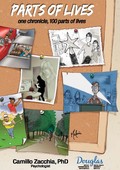Human beings are an odd lot. We like to have things simple and clear – (Which is the best hospital? Which is the greatest band of all time?) Unfortunately, despite our desire for black and white answers, our world is hopelessly grey. The current wave of frenzy over the H1N1 virus highlights what happens when our anxiety mechanism – which is there to protect us – interacts with a threat that we cannot control with certainty.
Anxiety: a subjective experience
No two people treat the threat of H1N1 the same way. Some people treat the pandemic like the histrionic ranting of crazed doomsdayers, while others seem to want to bathe themselves in Purell.
Whenever I give a talk to a group of anxiety sufferers, the room comes alive. People nod, smile, and poke at each other whenever they hear of familiar experiences. Whenever I speak to a group of people who do not suffer from an anxiety disorder, such as students, or the general public, the talk seems rather dry and academic. This is because anxiety is one of those things that is so subjective, it is difficult for someone who does not suffer from debilitating anxiety to understand what another person might be going through. (This even extends to anxiety sufferers. It seems that they do not always fully appreciate why others suffer from fears that they do not share themselves. For example, a needle phobic may not understand why someone would be afraid of an elevator. Meanwhile the elevator phobic could breeze through a blood test and fail to understand what the big deal with a needle is.)
I think the powerfully emotional testimonial delivered by the father of Evan Frustaglio, the 13 year-old boy from Toronto who died from H1N1, flipped a switch in many people from one of complacency to one of utter panic. The good thing is that many of the people who were sitting on the fence with regards to the vaccine decided to get in line. Unfortunately it also touched off a wave of panic.
Anxiety: a protective instinct
In reality, one does not need to suffer from a diagnosable anxiety disorder to suffer from anxiety. Anxiety is a universal experience. It lies dormant most of the time but comes alive whenever we are threatened. In its simplest form, it makes us run away from danger or, failing that, defend ourselves against the threat (the fight or flight response). But what are we supposed to do when the threat cannot be seen? If I run from a bear in the woods, I know when I have reached safety. But how can I know if I am safe from a virus? If I can’t even see it, in which direction should I run?
The problem with the H1N1 virus is that, in the absence of our personal experience with it, our imaginations take over and this affects our ability to function rationally.
Living with risk
How many of us drive to work every day? If asked, we would all admit that we have a real chance of getting killed in a car accident on the way to work. The fact that it can happen does not stop us from driving. Over time we become a little oblivious to the risk simply because we drive so often. Therefore, a little reminder of the risks from time to time is not a bad thing. It makes us anxious and we respond by being more careful on the road. Anxiety makes us slow down around dangerous curves.
In our day to day existences we tend to float along happily oblivious to the occasional bullets whipping by us. They come from many directions and from many sources. They are also quite rare and their infrequency makes us complacent. However, they occasionally do kill people. When this happens, we tend to scrutinize that particular source of danger. This engages our anxious instinct to avoid, run away from, or control, the threat.
Unfortunately, if we allow anxiety to control us, we will not be able to function normally. Worse yet, we can sometimes expose ourselves to greater risks from threats we hadn’t thought of in our efforts to avoid threats we are focussing on. (Remember the roof that collapsed in Morin Heights? How many people risked fatal falls or heart attacks by climbing up onto their roofs to clear snow?)
Get the facts and act rationally
Emotions only protect us in cases of imminent danger (like when a bus is about to hit you!) The rest of the time, the best protection against risk is to act on the facts in a rational way.
The facts of H1N1 are as follows:
- It is a virus that we have limited immunity to (especially younger people).
- It is NO MORE deadly than the seasonal flu.
- The seasonal flu ALSO kills people.
- Most of us could easily survive a flu.
These facts are no more or less serious than facts about a hundred other potential killers that we live with every day.
This does not mean the threat should not be taken seriously. I get just as scared as the rest of you at the thought of dying, or worse, of losing a child to H1N1. But I am also aware that it is not very likely to happen and, more importantly, not more likely than a number of other potential tragedies. The good thing about the H1N1 threat is that, even though it is not a particularly dangerous one, we have a relatively harmless and simple way of controlling or reducing its potential harm even further.
It is called a vaccine.
See also (Influenza A (H1N1): From the reasonable to the ridiculous)
Tagged as Anxiety, Flu virus, H1N1, health anxiety, Influenza, Influenza A.
Posted in Anxiety, Mental health, Stress.
Posted on 03 Nov 2009
